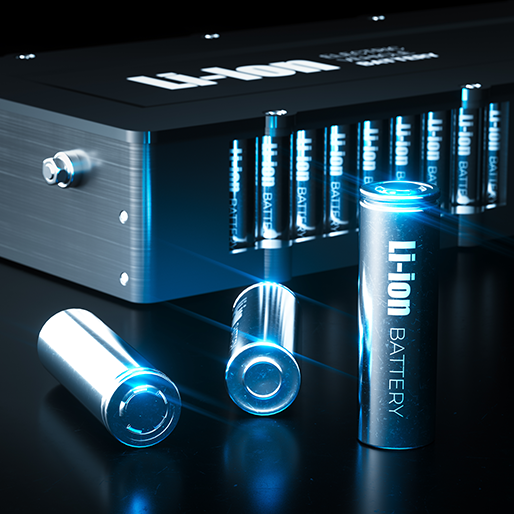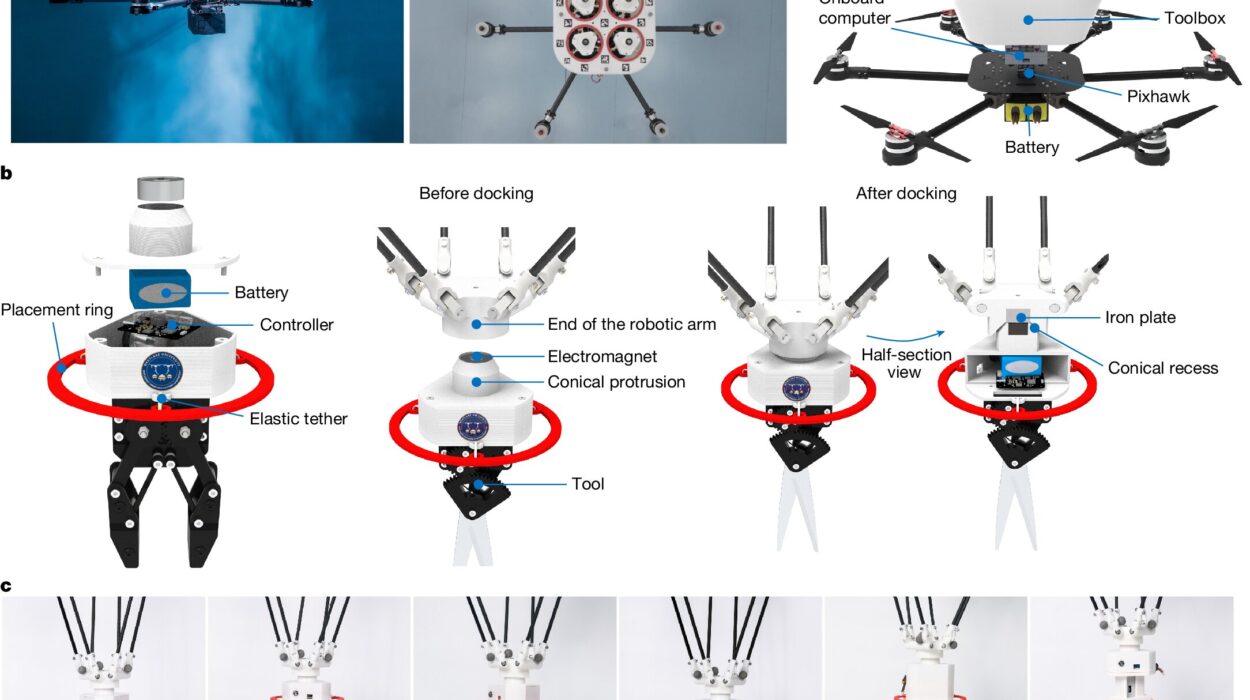If the modern age has a defining sound, it might be the quiet hum of a smartphone vibrating on a table, the gentle whirr of an electric car pulling away from a traffic light, or the soft hiss of a laptop’s cooling fan as it crunches data. Ours is a world ablaze with digital magic, a symphony of speed and seamless connectivity. Every year, microchips get smaller and faster, screens grow sharper and brighter, networks stretch further and faster across the globe. And yet, amid all this progress, there remains one stubbornly unimproved relic of the 20th century that weighs us down—both figuratively and literally.
The battery.
It’s the same exasperating drama every evening: watching the glowing bar on your phone’s screen sink into the red while you scramble for an outlet. Electric vehicle owners map their road trips around charging stations like medieval travelers charting stops at wells. Laptop users sit hunched over café tables, measuring minutes until power dies.
It feels unfair. Everything else has rocketed forward on a supercharged trajectory. Why haven’t batteries kept pace?
To answer that question, we must plunge deep into the heart of matter itself, into a story of atoms and ions, of brilliant chemistry and heartbreaking limits. It’s a story not merely of technology, but of humanity’s restless ambition—and the stubborn rules of the universe that refuse to bend to our will.
From Frogs’ Legs to Lithium Dreams
The tale of the battery begins in a dusty Italian laboratory more than two centuries ago. In the late 1700s, a physician named Luigi Galvani discovered that touching frog muscles with metal made them twitch. He called this phenomenon “animal electricity,” imagining some life force coursing through living tissue.
But another Italian, Alessandro Volta, disagreed. He believed the electric effect came from the metals themselves, not the frogs. To prove it, Volta stacked discs of copper and zinc separated by cloth soaked in brine. When he connected the top and bottom with a wire, a current flowed. Thus, in 1800, the battery was born.
Volta’s “pile” was primitive and dripped salt water. But it produced something magical—a steady, predictable electric current. From Volta’s modest stack grew the electrical age: telegraphs, telephones, radios, computers.
Batteries evolved slowly at first. Lead-acid batteries appeared in 1859, heavy and toxic but reliable. Nickel-cadmium batteries came next. Still, progress was incremental, measured in small leaps rather than moonshots.
Then, in the 1970s, a quiet revolution brewed. Scientists dreamed of a lightweight battery with extraordinary energy density, capable of storing massive charge in a small space. The answer lay in an element as light as air, perched at the very top of the periodic table: lithium.
Lithium is an electric dream. It’s the smallest solid element, with one eager electron waiting to leap away. That restless electron gives lithium batteries their extraordinary energy. Pound for pound, they store far more power than older chemistries. In the early 1990s, Sony commercialized the first lithium-ion batteries, paving the way for smartphones, laptops, and eventually electric cars.
And yet, three decades later, lithium-ion batteries still look remarkably similar to those early models. We’ve wrung more efficiency from them—better anodes, clever cathodes—but their fundamental limits loom like invisible walls. Why? Why has battery tech lagged so stubbornly behind the blistering pace of chips and software?
Moore’s Law and the Tyranny of Chemistry
To understand why batteries stall, it’s helpful to contrast them with silicon chips. For decades, computing has raced ahead under the banner of Moore’s Law. Roughly every two years, engineers double the number of transistors on a chip, shrinking them to almost unimaginably small scales. A single fingernail-sized chip now holds billions of switches, each flipping on and off at blistering speeds.
This progress isn’t magic. It’s the result of clever engineering, but also of physics that cooperates at microscopic scales. Electrons move through silicon with near frictionless speed. By shrinking distances, chips consume less power while doing more work.
Batteries, however, are prisoners of chemistry. Their energy comes from chemical reactions. Inside a battery, lithium ions shuttle between electrodes through a liquid or solid electrolyte. This motion physically moves matter. Ions are big and lumbering compared to electrons in a circuit. And every reaction is governed by strict rules of thermodynamics.
In other words, you can’t just “miniaturize” batteries the way you can transistors. There’s no magical shortcut to store more energy in the same atoms. Nature sets strict ceilings for how much charge a material can hold before it becomes unstable—or dangerous.
The result is a brutal asymmetry. Computing grows exponentially. Battery energy density grows linearly, creeping forward by about 5-8% per year, sometimes less.
The Balancing Act of Energy, Safety, and Longevity
Consider the demands we place on batteries. We want them small and light, but also able to store massive energy. We want them to release that energy quickly—to power a car’s instant acceleration or a phone’s video stream. We demand that they last for thousands of cycles and remain safe under abuse. And we want them cheap.
These goals often collide head-on.
Take energy density—the amount of power stored per kilogram. Lithium metal, as an anode, offers tremendous potential energy. But it’s a devil to control. When lithium plates onto electrodes unevenly, it forms whiskery structures called dendrites. These can pierce the separator between electrodes, creating a short circuit—a catastrophic failure that can lead to fire or explosion.
This isn’t just theoretical. Think of the infamous Samsung Galaxy Note 7. In 2016, reports flooded in of phones bursting into flames. Investigations traced the problem to manufacturing flaws and squeezed tolerances. But at its core was the reality that lithium-ion cells operate close to their chemical edge. Push them too hard, and they bite back.
To make batteries safer, manufacturers add protective layers, fire-retardant chemicals, or limit how much the battery charges. But every safety measure subtracts from performance.
Then there’s cycle life. Every time you charge and discharge a battery, tiny mechanical changes occur inside. Electrodes expand and contract. Some lithium gets trapped, no longer available for future cycles. Over hundreds or thousands of cycles, this leads to capacity loss.
So engineers are trapped in a perpetual juggling act—trying to maximize energy density, keep cells safe, and ensure they last for years. It’s a compromise no amount of engineering genius can entirely escape.
The Curse of Scaling Up
There’s another cruel twist: scaling. A prototype in a lab is one thing. Mass production is a different beast.
Researchers have built lab cells with energy densities far beyond commercial batteries. New chemistries emerge every year—lithium-sulfur, lithium-air, solid-state batteries. In controlled conditions, they can outperform today’s cells spectacularly.
But when companies try to manufacture these designs at scale, reality intrudes. Minor variations in materials or manufacturing lead to defects. Solid electrolytes crack under stress. Electrodes fail to absorb repeated cycling. Costs skyrocket.
Tesla’s Elon Musk summed it up bluntly: “Prototypes are easy. Production is hard.”
Consider solid-state batteries, often touted as the holy grail. In theory, they replace flammable liquid electrolytes with solids, preventing dendrites and boosting safety and energy density. Automakers dream of solid-state cells offering longer ranges and faster charging.
Yet solid-state batteries face daunting hurdles. The solid electrolyte must conduct ions as swiftly as liquid. It must remain stable across extreme temperatures. And it must form flawless contact with electrodes. Even microscopic gaps can ruin performance.
Scientists are making progress, but commercialization remains years away. And when solid-state does arrive, it may offer only incremental gains, not the miraculous leap consumers expect.
The Physics of Time and Speed
If energy density is one bottleneck, charging speed is another. People want batteries that refill as quickly as gasoline tanks. But physics throws up barriers.
Charging a battery is like pouring water into a sponge. Pour too fast, and the sponge overflows. In batteries, rapid charging can cause lithium to plate onto the surface rather than slip between layers. That leads to dendrites, reduced capacity, and safety risks.
Fast-charging requires delicate dance steps: sophisticated electronics to manage voltage, precise thermal control to avoid overheating, and expensive materials that tolerate rapid ion movement.
We’ve made progress—some batteries can now charge to 80% in fifteen minutes—but physics imposes hard limits. To push beyond requires exotic materials, new chemistries, and likely higher costs.
The Rare Earth Quandary
As electric vehicles and renewable energy storage expand, battery demand soars. But this creates geopolitical and ethical tensions.
Lithium, cobalt, nickel—these are the lifeblood of modern batteries. Yet they’re concentrated in a few regions. Much of the world’s cobalt comes from mines in the Democratic Republic of Congo, where reports of child labor and hazardous conditions stain the supply chain.
Nickel mining can produce toxic waste. Lithium extraction strains water resources in arid regions like Chile’s Atacama Desert.
Companies are racing to reduce cobalt use and recycle old batteries. New chemistries—like lithium iron phosphate (LFP)—avoid cobalt entirely. But these tradeoffs come with lower energy density, meaning bigger, heavier batteries for the same range.
Our hunger for better batteries isn’t just a technological challenge—it’s a moral one, entangled with human rights, environmental stewardship, and global politics.
Entropy’s Relentless Law
Underlying all these struggles is a fundamental truth: nature abhors order. Entropy is forever gnawing at our carefully crafted devices. Batteries, by their very nature, are chemical machines that undergo constant change.
Every electron transferred in a battery comes with side reactions. Tiny amounts of lithium get trapped. Electrolytes degrade. Micro-cracks accumulate. The battery ages, cell by cell.
We can slow this decay. We can design better materials. But we cannot halt the relentless march of entropy. Batteries, like living things, have finite lifespans.
Where Do We Go From Here?
Despite these frustrations, there’s reason for hope. The past decade has seen remarkable incremental gains. Modern lithium-ion batteries have doubled in capacity since the early 2000s. Electric cars now routinely exceed 300 miles of range. Smartphones last a full day under heavy use.
Startups and research labs pursue next-generation technologies with dogged determination. Silicon anodes could boost energy density. Solid-state designs inch closer to viability. Sodium-ion batteries might offer cheap alternatives for grid storage.
And software is helping bridge the gap. Tesla’s cars, for instance, manage batteries with sophisticated algorithms that adjust charging rates and optimize cell health. Predictive models help avoid catastrophic failures.
It’s tempting to despair at how slowly batteries improve. But context matters. Batteries are not mere electronics—they are chemical factories, managing powerful reactions under tight constraints. Progress will remain steady, even if it’s not exponential.
Perhaps the greatest hope lies in human ingenuity itself. For two centuries, we’ve wrestled with the challenge of storing energy. Each new breakthrough seemed miraculous. The next chapter may yet surprise us.
A Silent Revolution Unfolds
When you slip a slim smartphone into your pocket, or glide down the highway in a quiet electric car, or hold a cordless power tool, you’re witnessing the fruits of humanity’s quiet battle with the chemistry of storage.
The battery may not have improved as fast as silicon chips. It may still frustrate us with dead phones, range anxiety, and flaming hoverboards. But it’s also one of humanity’s greatest triumphs—a device that stores invisible force and gives it back on demand.
It took humanity thousands of years to harness fire, centuries to tame electricity, and we’re still learning to store it safely and efficiently. The battery’s slow progress is not a failure but a testament to the depth of the problem.
So the next time you glance nervously at the flickering red bar on your phone, remember: inside that slim cell is a marvel of atomic architecture, a tiny cathedral built from the smallest building blocks of matter. We’ve come so far—and the journey isn’t over.
The future may not deliver miracle batteries overnight. But each quiet advance, each stubbornly improved cell, brings us closer to a world where energy flows as freely as data. And in that world, the battery’s slow but steady march might one day catch up with our dreams.






